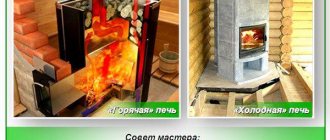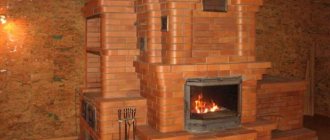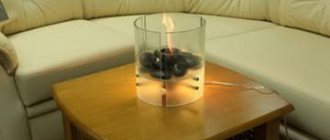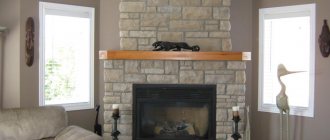It is simply impossible to imagine a private house or cottage without a stove, which provides not only warmth, but also comfort in the home. Today there is a huge variety of brick stoves for the home. The main advantage of this design is the fact that, thanks to its diversity, it will fit into any interior and will complement any setting. Many owners of private houses can make a stove with their own hands; the most important thing is to know the basics, which will be discussed in this article.
Materials and tools for work
In order to build a stove with your own hands, you should first stock up on the necessary tools and what it will be made of. To do this, take one of three types of bricks:
- ceramic;
- silicate;
- refractory.
In general, the last option is the most ideal material from which stoves are made, but as practice shows, they are most often used when laying a fireplace or firebox on the outside of a building.
Among the refractory bricks are:
- fireclay;
- refractory.
After everything has been decided with the materials for laying the stove and the choice has been made, you can begin to prepare the necessary equipment. During work you will need:
- rule;
- hammer-pick;
- fun;
- furnace hammer;
- sweeper for cleaning the canal;
- level;
- marking rod;
- plumb line;
- pliers;
- chisel;
- sieve;
- construction corner;
- container;
- rasp.
Once all the necessary tools are ready, it is time to begin preparing the solution.
Types of chamber electric furnaces with bogie hearths
| Furnace designation | Max. temp., °С | Slave. production, mm (width×length×height) (A×B×C) | Gab. dimensions, (width×length×height), mm (D×E×F) | Power heating | Furnace weight |
| SDO 10.20.8/12 | 1200 | 1000×2000×800 | 1700×5720×2850 | 115 | 2600 |
| SDO 12.20.10/12 | 1200 | 1200×2000×1000 | 1900×5720×3200 | 130 | 3000 |
| SDO 15.18.12/12 | 1200 | 1500×1800×1200 | 2900×4000×3500 | 135 | 4500 |
| SDO 15.30.10/10 | 1000 | 1500×3000×1000 | 2900×7000×3400 | 250 | 8000 |
| SDO 20.25.15/10 | 1000 | 2000×2500×1500 | 3400×6500×4500 | 260 | 9200 |
| SDO 20.40.15/10 | 1000 | 2000×4000×1500 | 3400×9000×4500 | 380 | 14000 |
| SDO 25.50.20/10 | 1000 | 2500×5000×2000 | 4000×12500×5400 | 600 | 25000 |
Furnace mortar
The brick is placed on clay mortar. It is worth noting that red clay is used for red brick, and if the stove is planned to be built from fireclay bricks, then it is worth stocking up on fireclay clay.
The mortar is prepared from river sand, where the grain fraction is from one to one and a half millimeters and clay in a ratio of 2.5 to 1. Water is added to the solution in the amount that is needed to obtain the desired consistency of the masonry mortar. If you don’t want or have the opportunity to prepare this solution yourself, then you can purchase a ready-made baking mixture in a specialized store.
The solution is prepared as follows:
- The required amount of clay for kneading is soaked in cold water for 24 hours.
- The resulting mass is divided into five equal parts.
- Sand is added to each part in the proportion required. This can be ¼, ½, ¾ of the total mass of sand.
- All parts are combined and kneaded until smooth, after which the resulting mixture is left for three to four hours to allow the water to drain.
All stoves, without exception, consist of a foundation, an array that includes a firebox and air duct, and, of course, a chimney.
Foundation
This element of the furnace plays an important role, because it is the foundation on which the furnace structure will stand. In some cases, it is made separately from the main foundation of the house. And this is no coincidence:
- The stove is quite heavy and during subsidence the soil will be much lower than under the main building.
- Since the temperature in the furnace is unstable, the furnace itself can move, and this is very dangerous for the walls of the house.
- A separate foundation for the stove structure provides an acceptable distance between the stove and the main building. This reduces the risk of fire.
Among other things, in this position it will be easier to maintain it: carry out repair work, remodel or make adjustments if necessary.
The base for the stove is made of bricks or rubble, which are placed on a mortar of either lime or cement.
The use of clay mortar for foundations is strictly prohibited. Indeed, under the influence of high temperatures, clay begins to collapse.
When building the base, it is worth considering that it should be five to seven centimeters larger than the base of the stove itself on all sides. To go deeper into the ground, you can take about 75 centimeters.
If the building is one-story, then fifty is enough, but if it is a two-story building, then it is worth deepening the base by one meter.
Array
Among the elements that are included in the stove array are the body, firebox and chimney. Red brick is used for masonry, and refractory brick is used for cladding. The body itself and the chimneys are laid out on a solution of refractory clay and sand. The cladding uses a composition of fireclay powder with fire-resistant clay. The thickness of the seams should be minimal, no more than five millimeters.
The most important thing that should not be forgotten is the fact that it is necessary to adhere to the bandaging of the seams, otherwise, over time, the destruction of the furnace walls will occur.
Before you start building the stove, you need to soak the red brick in water for about fifteen minutes. This is done so that the bricks do not draw water from the masonry mixture; refractory bricks are simply wiped with a damp cloth.
During the work, a number of conditions must be met:
- Checking the horizon and diagonals to prevent tilt. If it is present, you will have to redo the upper rows and eliminate the error.
- Filling of joints with mortar. The oven must be periodically cleaned with a cloth to remove excess solution.
- The chimney will need to be scrubbed with a wet brush to remove dirt and grout.
As experienced stove makers advise, before laying out a row, it must be duplicated in a separate place without using a solution. This move will allow you to see all possible errors and neutralize them in time. Among other things, cutting bricks in this form is much easier and faster.
Pipe
This element of the furnace is made exclusively of red solid brick. At the attic level, a cement and lime mortar is used as a binding element, and on the outside only a cement mortar is used, because the clay will simply be washed away by rain over time.
The smoke channel is built in an exclusively vertical position with a precisely maintained cross-section and height.
Where the pipe will come into contact with the wooden ceiling, a widening is made that is not adjacent to flammable materials and tow or asbestos soaked in clay mortar is inserted into the hole formed.
A deflector made of metal is placed on top of the pipe. It not only prevents precipitation from penetrating inside, but also extinguishes the sparks that form, which is very important from the point of view of fire safety.
Features of use
The oven is easy to use. To warm up the product you need to do the following:
- Load pallets into wood stove. Gas and electric models are connected to the gas pipeline and the electrical network, respectively.
- Dry the heating element after idle time in an electric oven. Other types can be enabled immediately.
- Select the desired program mode.
- Preheat the chimney for 6-7 minutes.
- Check the thermostat indicators. The temperature is maintained automatically in most modern models.
If the oven is used for cooking, you need to open the lid and place sheets of kitchen utensils into the oven. After finishing, the device turns off. It should not be kept in working condition for more than an hour.
Do-it-yourself stove laying: drawings and order
When laying the stove, to prevent possible errors and further alterations, it is necessary to use drawings and diagrams (orders). If you don’t have experience, it’s better to draw up a drawing yourself, contact professionals in this field or use ready-made diagrams on the Internet. After all, if the rows are violated, quite serious violations can occur.
The simplest
For beginners in this matter, it is best to use the simplest option for laying a stove. This structure will occupy half a square meter. It does not need any base (foundation), you can simply lay an ordinary, durable wooden product. This is done with mandatory waterproofing, after which a twelve-centimeter layer of sand is poured. After which the first row of brickwork is completed without using mortar.
After the asbestos cord is wrapped, the fire door is installed. Then comes the third row, which is made using fireclay bricks. After the blower has been formed, you need to install the grate. Next, the brick is laid on edge to create a chimney.
Here one of the bricks is also laid without using mortar, so that it can be easily removed later. The masonry continues until the chimney, made of lightweight material, is completed.
Russian
The Russian stove has one significant drawback - heating occurs in the upper layers. However, this type of stove structures is very popular among owners of private houses.
It can be of two options: it can be used either for heating the room, or it can also perform another function - cooking, since it has a hob. They can be both large and small. Below is an example (diagram) of a small furnace structure.
Swede
This type of stove has great functionality. Among other things, this design has an original, beautiful design.
The main advantage of the stove is the fact that after it is lit, it can keep warm for two days.
This will be enough to heat a small house of forty square meters.
This model is equipped with both a hob and an oven. After kindling, the stove structure will begin to “share” heat within fifteen minutes. You can find out how the ordering of this model is carried out by looking at the diagram.
It turns out that making a stove with your own hands is not so difficult, the most important thing is to decide on the size and shape of the product, stock up on the necessary equipment and materials, make a drawing, make arrangements and then start building the stove structure. Sitting by the stove in the evenings with a mug of hot tea on cold winter evenings, you can enjoy the warmth and comfort that comes from it.
Recommendations for selection
The model and dimensions of the stove are selected depending on the assigned functions.
Hearth stoves for heating a home are selected taking into account their location. You need to calculate in advance what dimensions the device should have. You must also ensure that the chimney pipe is at least 1 meter in length. An equally important indicator is power. The higher it is, the better the oven heats. But a powerful device will require more fuel.
Popular models for residential premises:
- Fireplace stoves WGO. Manufactured in Germany and made from fireproof fireclay HBO+.
- ECO+ oven. It has a simple design and low cost. Made from fireproof materials.
To heat non-residential premises (bathhouse, garage), you also need to select a model based on power and size. Externally, such hearth sauna stoves look less attractive, but their cost is lower. It is recommended to take stoves of the KIV, PKO-40 series. They are able to heat a room to the desired level without significant fuel costs.











